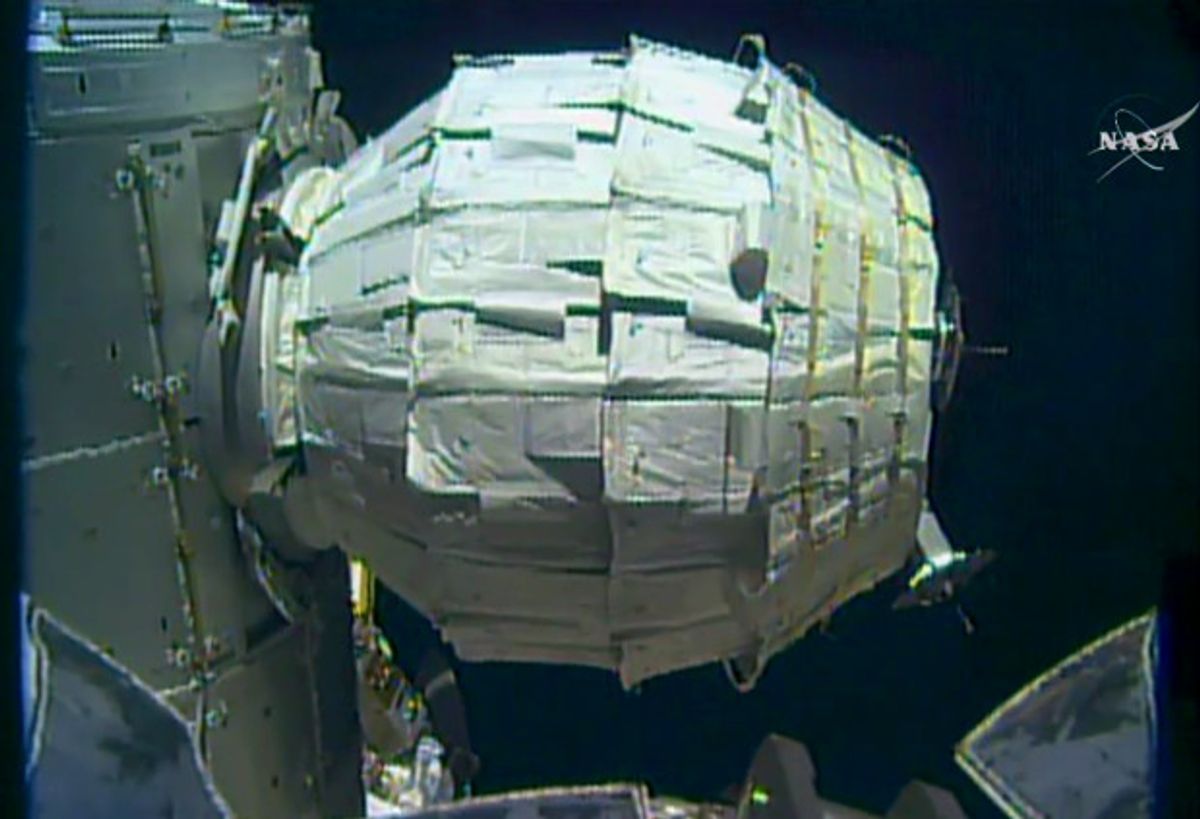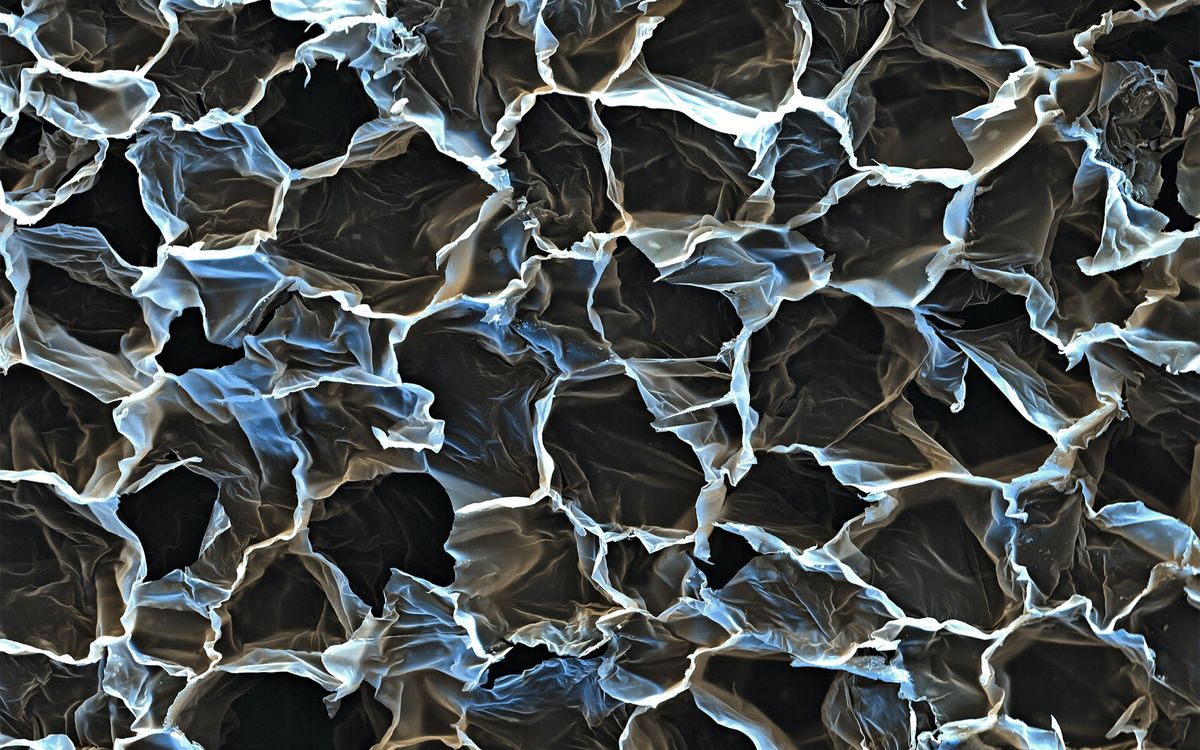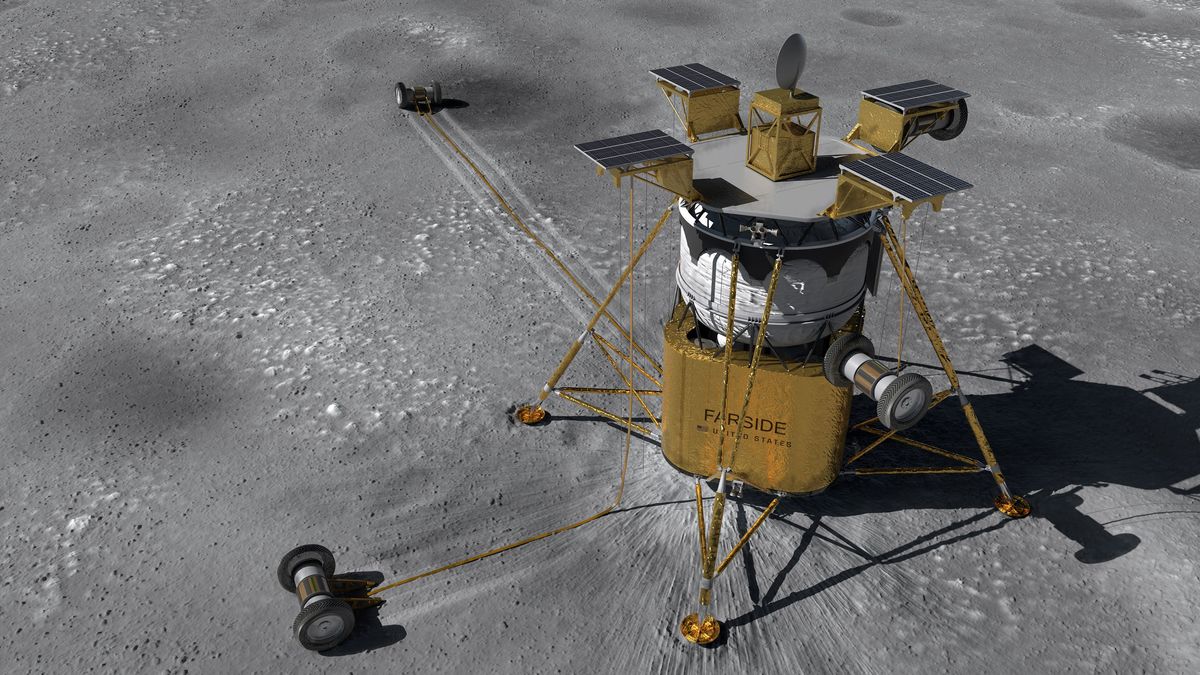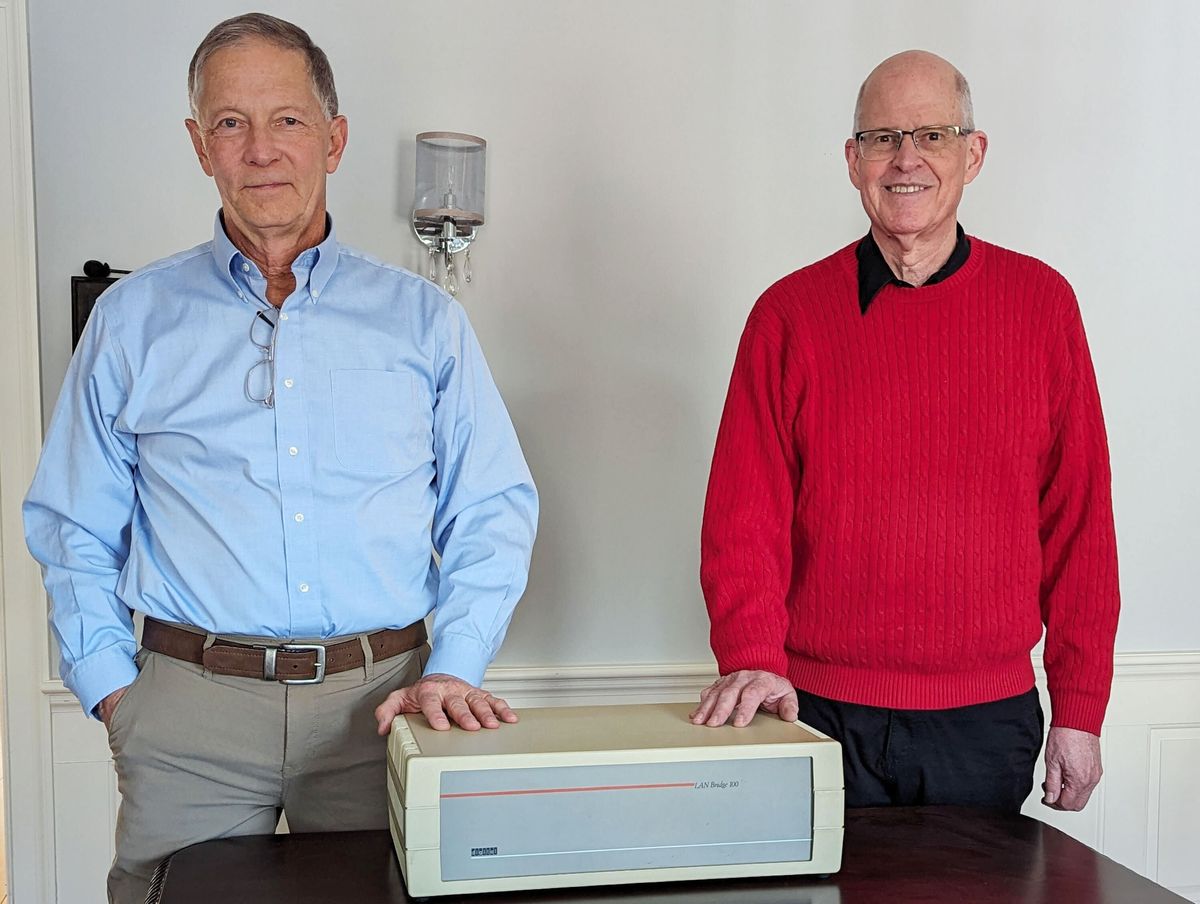On Thursday, astronauts on board the International Space Station were scheduled to spend about 45 minutes inflating the BEAM (Bigelow Expandable Activity Module), a room made out of fabric designed to be blown up like a balloon with air from inside the ISS. It sounds like a simple enough process, but as with everything in space, it isn't, and it wasn't. After BEAM stubbornly refused to balloonify itself on Thursday after a couple hours of intermittent manual inflation, NASA decided to stop to try and figure out what was going on.
Today, the process resumed, and after about 8 hours of stop and go pressurization, BEAM has finally reached its final (and pleasingly round) shape.

Since all of this was supposed to be done on Thursday, NASA and Bigelow held a press conference on Friday to discuss what probably happened with the module. Essentially, during the inflation process they were looking for a particular ratio of pressure to volume: add some air, the pressure inside of BEAM goes up, it inflates a bit, and that increase in volume lowers the pressure back down again. Do that over and over, and you'll (eventually) end up with a fully inflated module. On Thursday, however, you'd add some air, the pressure would increase, and then not decrease, meaning that the module wasn't actually inflating itself, which is bad.
Bigelow and NASA figured that BEAM's reluctance to expand was likely due to the friction between its many layers of fabric. Part of BEAM's appeal is that you can pack all of those layers down very tightly for launch, but doing so smooshes them all together, and during un-smooshing there will be lots of frictiony layer-on-layer action. Friction of this nature was certainly expected, but since this is the first time Bigelow has tried this particular inflation mode, they simply didn't have any data to develop a good model of how the layered fabric would behave in vacuum and microgravity. NASA was reluctant to add too much air at once, both to avoid damaging BEAM's structure and to avoid putting a load on the station itself, if the inflation ended up being on the dynamic side.
Between Thursday and Friday morning, BEAM expanded a little bit more all by itself, which left NASA optimistic that there was nothing actually wrong with it. After depressurizing BEAM on Friday morning to let it relax a little bit, NASA gave things another shot today. Starting at 9 a.m. ET, astronaut Jeff Williams began cautiously adding little 1-2 second squirts of air into BEAM, and the module responded by slowly but steadily growing in both length and diameter. After seven hours of mind-numbingly cautious optimism, NASA was confident enough to ask Williams to fire off bursts of 10 seconds, then 14, 15, and 30 in rapid succession, followed by 9 more seconds to complete the manual inflation.
Everything was broadcast live on NASA TV, and while it was incredibly dull to watch most of the time, it was very cool to listen to: inside BEAM are a whole bunch of little ripstop straps that are designed to pop in sequence to keep the inflation rate under control, and as more air was added to the module, all of those pops "sounded like when popcorn in a frying pan starts up," as Williams described it.
In total, the manual inflation process added 67 inches to BEAM's length, and the module reached its full diameter of 127 inches. The final step was to seal BEAM off from the station again, and pressurize it to 14.7 PSI (the same as the ISS interior) using eight tanks of air that BEAM is carrying.
The additional day it took to inflate BEAM has changed NASA's schedule around a bit; the module needs to be leak checked for at least 80 hours and have lots of other tests done to it before astronauts can go inside. And even then, they'll just be inside briefly to check things out. For the majority of its two year stay, BEAM will stay sealed off, acting as a proof of concept for inflatable space habitats and returning data on things like micrometeoroid impacts and radiation. At the end of those two years, BEAM (which cannot be packed up again), will be cast aside to burn up in the atmosphere. It'll be sad, but if everything goes well, BEAM will have been just the first of many inflatable space habitats that will make access to space much cheaper (and roomier) than it is now.
Evan Ackerman is a senior editor at IEEE Spectrum. Since 2007, he has written over 6,000 articles on robotics and technology. He has a degree in Martian geology and is excellent at playing bagpipes.



